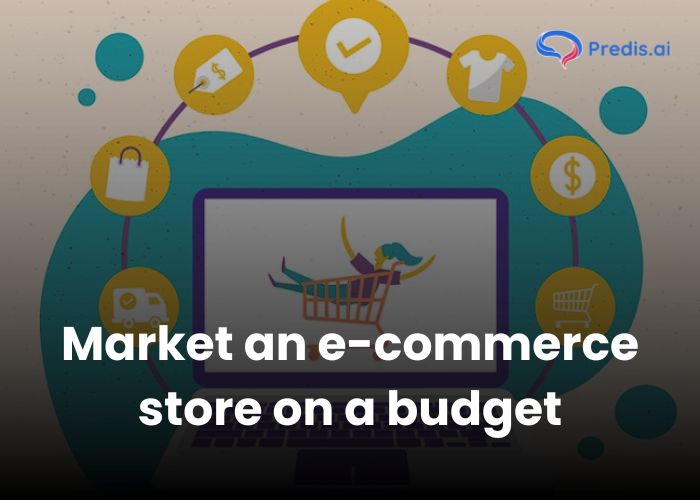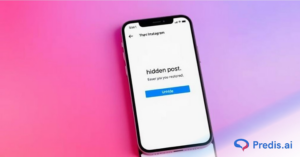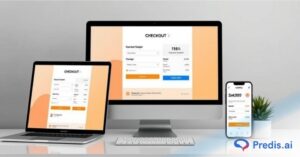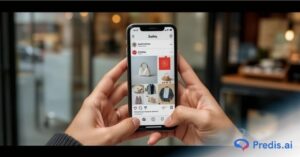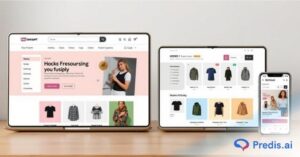With today’s competition in the digital world, knowing how to market an e-commerce store on a budget can put you ahead of the race by miles! That being said, effectively marketing your store can be challenging, especially when you’re running on a tight budget.
This is why, we’ll explore some strategies in this comprehensive guide to help you generate traffic. This should allow organic growth for your online store. We will also take you through some more specific strategies on how you can market your online store on social media as well. Then let’s get started!
The Focus Should Be on Generating Traffic
You might think of your end goal as getting more sales, but when you’re on a budget, the smartest thing to do is to focus on bringing in traffic.
Now, attracting more and more organic traffic to your website requires consistent effort and patience. You must do more than stuff up keywords in your website content and product pages. Leveraging a white label website builder api allows businesses to quickly create client-facing websites, landing pages, and microsites that drive traffic without heavy development resources.
You need to think of something new and creative each time. For instance, powerful storytelling can help. It helps you distinguish your e-commerce store from your competitors.
Aerie, an intimate apparel brand, not only decided to break the taboos related to unrealistic body standards but also took the initiative of encouraging women to show their scars or any disability as a part of the Aerie Real Campaign.
Introducing #AerieREAL helped them gain tremendous organic growth, which can be seen by the fact that the hashtag itself has been used over 360,000 times on Instagram.
Let’s learn how to market your e-commerce store organically.
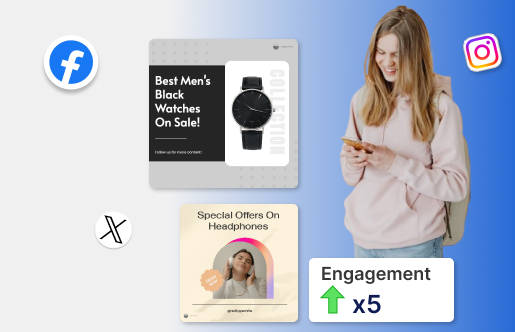
How to market an e-commerce store organically?
Once you have your goal set up as driving more traffic, you will find it easier to come up with creative ways to do so. Naturally, one of the ways is paid marketing and promotion. But since we’re on a tight budget, let’s see how we can market an e-commerce store organically:
1. Start a blog with SEO best practices
Launching a blog allows you to create valuable content around your products. Maximize the use of keywords and provide informative content related to your niche. Regularly update your blog to keep your audience engaged and boost search engine rankings.
2. Write guest blogs
Collaborate with influencers and other blogs in your industry to reach a broader audience. Guest blogging not only drives traffic but also builds credibility. Be sure that your content adds value and aligns with the host site’s audience.
3. Entice influencers with free products/services
Influencers can amplify your brand’s reach.
Offer free products or services to influencers in exchange for reviews or mentions on their platforms. This approach can significantly boost your store’s visibility.
4. Ask for reviews
Positive reviews build trust among potential customers.
Encourage satisfied customers to leave reviews on your website or other review platforms. Address negative reviews promptly and professionally to demonstrate your commitment to customer satisfaction.
5. Use referral programs
Implementing a referral program can turn satisfied customers into brand advocates. Offer incentives for referrals, such as discounts or exclusive access to promotions.
6. Email marketing
Email marketing remains a powerful tool for e-commerce stores, especially for nurturing leads, reducing abandoned carts, and reconnecting with existing customers. In your emails, provide exclusive offers and discounts to entice customers back. To maintain strong email deliverability and protect your brand reputation, it’s also important to verify your SPF records with EasyDMARC, ensuring your emails consistently reach your customers’ inboxes.
You can also include scannable elements using Uniqode’s QR code generator to create dynamic, trackable QR codes that enhance engagement and simplify access to landing pages or promotions.
7. Use CTAs
Craft engaging messages with clear Calls-to-Action (CTAs). Offer exclusive discounts or early access to new products to incentivize subscribers.
8. Find a Facebook group
Identify and join relevant Facebook groups in your niche. Engage with the community by sharing valuable content and participating in discussions. Avoid spamming; instead, focus on building relationships.
9. Organize giveaways
Conducting giveaways on social media platforms can create buzz around your products. Encourage participants to share, like, and follow your page for a chance to win.
10. Advertise the cheap products more
Highlighting affordable items can attract budget-conscious customers. Emphasize the value and quality of these products in your marketing campaigns.
11. Focus on upselling and cross-selling
Increase average order value by recommending complementary products (cross-selling) or suggesting higher-priced alternatives (upselling).
12.Show the benefits, applications, and tutorials of your products
Create content that showcases how your products solve problems, and their applications, and provide tutorials. Video content is particularly effective in conveying this information.
13. User-generated content
Encourage users to share videos of themselves using your products. User-generated content adds authenticity and can be used in marketing materials.
14. Showcase product reviews and testimonials
Highlight positive reviews and testimonials on your website and marketing materials. Positive experiences from real customers build trust.
15. Reward your loyal customers
Recognize and reward loyal customers. Offer exclusive discounts, early access to sales, or loyalty programs to keep them engaged.
- Exclusive Discounts
- Early Access to Sales
- Loyalty Points Program
16. Engage in online events
Host online events such as webinars, product launches, or live Q&A sessions. Make use of different platforms like Instagram, TikTok, Facebook and Tumblr. These events create a sense of community and engagement.
17. Market in offline store
If you have a physical store, leverage it to promote your online store. Provide QR codes for in-store customers to easily access your online catalog. A QR code with tracking can provide valuable insights into customer behavior by showing how many people are engaging with your online catalog through in-store promotions
Implementing these strategies on a budget can significantly enhance your e-commerce store’s visibility, drive traffic, and foster organic growth. Adapt and combine these approaches based on your specific niche and target audience to maximize results.
Make Your Product Stand Out on Social Media 🤩
TRY NOW18. Site optimization for mobile devices
Did you know that mobile devices contribute to around 54% of the traffic on the internet as compared to desktop computers, which only hold 43% of the share? Many people in the world solely use mobile phones for their everyday search purposes.
This clearly shows that a large number of people use mobile devices for website search purposes. So, your website should definitely be optimized for mobile phones.
The following are the pointers to keep in mind while carrying out website optimization for mobiles:
- Your website should be mobile-responsive.
- Too many pop-ups can drive traffic away from your website.
- Image optimization is a must.
- The buttons and menus should be touch-friendly.
19. Website speed optimization
Your website’s speed can either attract or drive away traffic. Be careful! If your website loads slowly, it can increase your site’s bounce rate.
Nowadays, user experience plays a great role in retaining consumers on your website. So, if your website loads quickly, it can lead to increased engagement on your e-commerce site.
You can follow the below tips for carrying out website speed optimization.
- The number of HTTP requests should be limited.
- Your website images should be in compressed format.
- The website code should be clean and well-organized.
- A CDN plays a crucial role in reducing page load time.
20. Community engagement
Community engagement is a very powerful practice that helps you gain brand credibility. A loyal following can be created if you choose to engage with online communities and groups relevant to your niche.
In this way, you would be able to generate backlinks that add value to your site. Also, community engagement is crucial in building long-term relationships with potential customers.
The below-listed steps would surely enhance your community engagement approach towards making your website organically strong.
- Join industry-specific forums and groups.
- Social media participation is a must. For example, Facebook groups relevant to your product category.
- Q&A Platforms like Quora play a greater role in sharing insights about one’s own experiences.
How to market an e-commerce store on a budget on social media
For any e-commerce business, organic growth requires some time and effort. In the previous section, we explored budget-friendly strategies for marketing an e-commerce store without investing heavily.
Now, let’s delve into the realm of social media marketing on a budget. We’ll also cover how to integrate the use of platforms like Instagram and Facebook to their fullest potential.
1. Post religiously
Consistent posting is the backbone of social media success. Utilize tools like Predis.ai to streamline your efforts. Here’s how:
- Content Calendar: Plan your posts in advance with a content calendar to maintain a consistent posting schedule.
- Idea Generation: Use Predis.ai’s Idea Lab to brainstorm and generate ideas for engaging content that aligns with your brand.
- Custom Templates: Create visually appealing posts using custom templates to maintain a cohesive brand identity.
- Automate Posting: Schedule posts in advance to save time and ensure regular updates without manual intervention.
Struggling to maintain a consistent online presence for your e-commerce store? Predis.ai’s content scheduler simplifies cross-platform posting, enabling budget-friendly and efficient marketing.
2. High-quality posts
Quality matters more than quantity. Compromising here can cost you a lot of new followers, and more importantly, their trust.
Enhance the quality of the images and videos you use with the help of simple and budget-friendly tools like Predis.ai. This AI tool can help you generate visually stunning content that resonates with your audience as well.
3. Captions with CTAs
Calls-to-Action (CTAs) are crucial elements in marketing that prompt users to take a specific action. The effectiveness of a CTA lies in its clarity and relevance to the user’s journey. Here are various types of CTAs commonly used in marketing:
- Shop Now: Directs users to make a purchase on your e-commerce website. This is straightforward and effective for driving sales.
- Learn More: Encourages users to gather more information about a product, service, or topic. It’s useful for guiding users deeper into your website.
- Contact Us: Encourages users to reach out for more information or assistance. Commonly used on service-oriented websites.
- Request Callback: Suitable for businesses offering high-involvement products or services, where a personal callback might be beneficial.
- Share Now: Encourages users to share content on social media, increasing brand visibility.
- Register Now: Encourages users to sign up for an event, webinar, or conference.
- Limited-Time Offers: Creating a sense of urgency, CTAs like “Limited Time Offer” or “Shop Before Sale Ends” can drive immediate action.
4. Relevant hashtags
Increase discoverability by incorporating relevant hashtags. Be sure to use just the right number of hashtags- about 10-12. Avoid using the same bunch of hashtags for every post.
Pro tip: Utilize Predis.ai’s free hashtag generator for effective hashtag strategies.
5. Engage in comments
Actively engage with your audience by responding to comments. Foster a sense of community around your brand.
6. Post stories, reels, and videos
Social media is diverse, so should be your content. Reels often get higher visibility. Use them to showcase behind-the-scenes, product demonstrations, and customer testimonials.

7. New product launch posts
Build anticipation for new products with dedicated launch posts. Tease features, benefits, and exclusivity.
8. Feature each product and service
Regularly feature individual products or services with detailed posts. Showcase their uniqueness and value.
9. Influencer marketing
Who says you can’t connect with influencers on a budget? You can partner with micro-influencers or even customers to amplify your reach. It’s often more cost-effective than working with major influencers.
10. Swipe-up links
If you have an Instagram account with over 10k followers, you can use the swipe-up feature in stories to direct users to your website.
11. Ask for feedback
Encourage your followers and customers to provide feedback on your products or services. This not only enhances engagement but also provides valuable insights.
That being said, you must also be open to receiving feedback and handle criticism with grace.
12. Carousels of your products for an ad
Create visually appealing carousels to advertise multiple products in a single post. Showcase different features, use cases, or variations.
Wrapping up
This comprehensive guide is all you need to understand how to market an e-commerce store on a budget. By now, you must be well aware that a budget-friendly approach is not just about saving money but making the most out of every opportunity. Use Predis.ai and other tools to create engaging content, and keep an eye on your competitors.
By staying consistent, being creative, and fostering meaningful engagement, you can maximize the impact of your e-commerce store on social media without stretching your budget. Research your competition, adapt your strategies, and watch your online presence grow.
Related articles
Best Instagram Tools to Boost Shopify Sales
Instagram Captions for Real Estate Agents
Lacoste Instagram Marketing Strategy
Jasper.ai Caption Generator Alternative
Which is Better for E-Commerce Stores? Wix vs. Squarespace


